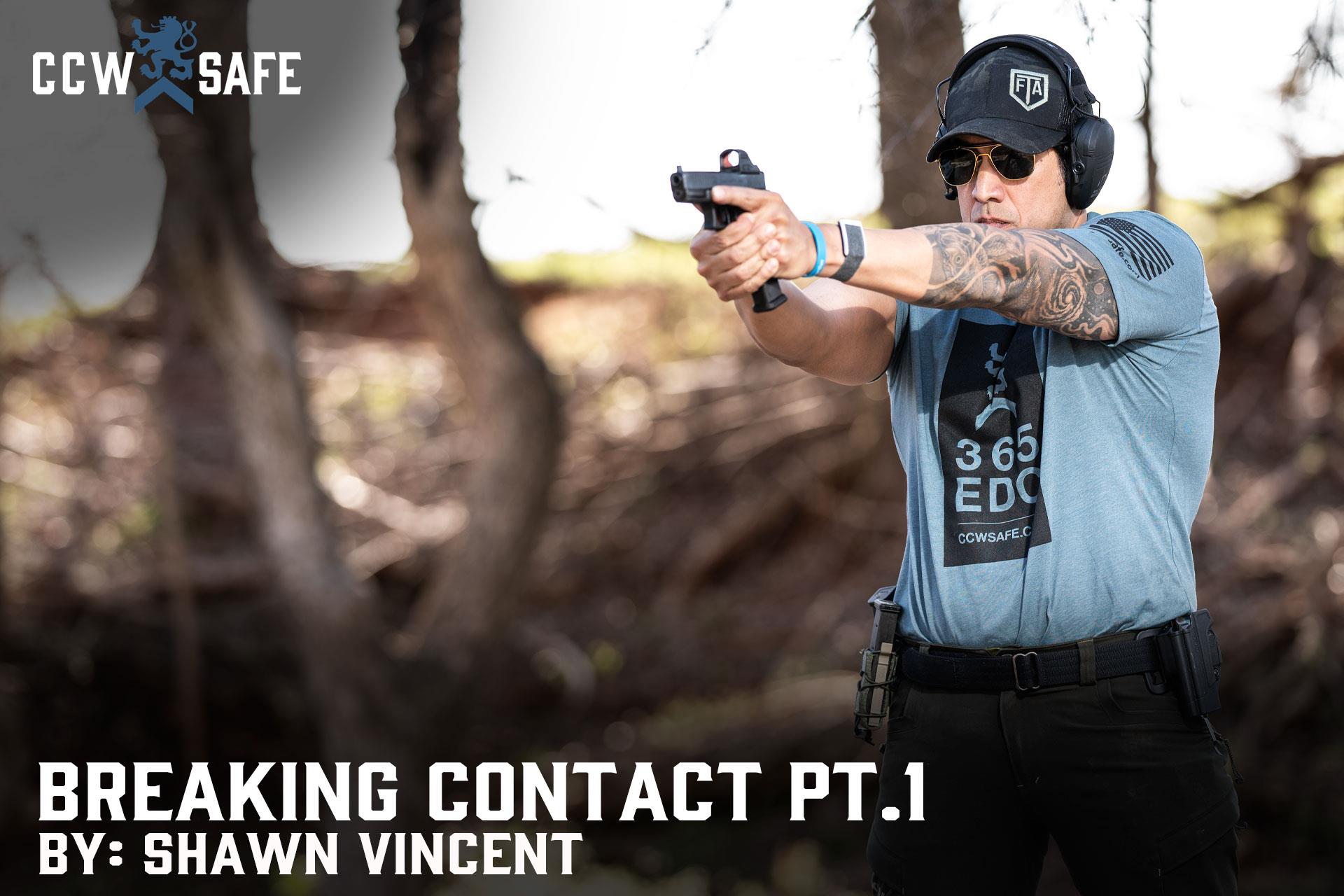
Posted on April 9, 2021
Breaking Contact Pt. 1
Breaking Contact
Part 1: The Ultimate Goal of Personal Protection
Lead prosecutor Jason Hermus cross-examined Amber Guyger during the former Dallas police officer’s trial for the murder of Botham Jean. Coming off a long double shift, Guyger mistakenly entered the wrong apartment — one floor above her own. When she encountered the occupant in a dimly-lit living room, she shot him, thinking he was an intruder in her own home. The shot was fatal.
According to the Dallas Morning News, at trial, the prosecutor asked, “When you aimed and pulled the trigger at Mr. Jean — shooting him in center mass right where you are trained — you intended to kill Mr. Jean?”
“I did,” Guyger replied. It was the wrong answer.
Don West, criminal defense attorney and National Trial Counsel for CCW Safe, suggests Guyger probably didn’t exactly mean to say that she intended to kill Botham Jean. The prosecutor had served as a police officer himself, and he would have known the training was to fire at center mass, which may very well kill the attacker, but that killing is not the intent; the intent is to STOP the attacker. That’s probably what Guyger meant, but that’s not what she said, and now she’s in prison, a convicted murderer.
Claude Werner, a retired Army captain and noted firearms instructor, states the purpose of self-defense in a different way: “Our goal in personal protection is to force a break in contact. We want them to go away, or we want to go away. One or the other.”
I have a list of high-profile self-defense cases that I’ve examined for CCW Safe, identifying the lessons learned for concealed carriers. Once I heard Claude’s concept of “breaking contact” as a goal for self-defense, I took some time and revisited the touchstone self-defense cases I’ve studied. I realized that, if the defender in each of those cases had approached their perceived aggressors with the mindset of “breaking contact,” they could have made alternative choices and experienced radically different outcomes, often avoiding the use of force altogether. The Guyger case is a perfect example:
When Amber Guyger took the stand at trial, she told jurors, “I was scared whoever was inside of my apartment was going to kill me.” Prosecutors argued, however, that once Guyger noticed there was someone in the apartment (and Guyger’s own testimony indicates she heard movement before she entered), she could have backed away and used her police radio to call for help. Using Claude’s concept of “breaking contact,” Guyger detected there was danger before she intentionally made contact with the perceived intruder. Rather than BREAK contact, she chose to INITIATE contact, with tragic results.
We have analyzed a number of cases where the defender violated Claude’s rule by initiating contact: Marcus Kaarma, Ted Wafer, Gyrell Lee. We have also explored cases where defenders missed opportunities to break contract by de-escalating or disengaging with a perceived aggressor: Gerald Strebendt, Keith Byrne, and Michael Drejka. We have even seen cases where the defender re-engaged a perceived attacker after breaking contact: Marissa Alexander, Alexander Weiss, and Jerome Ersland. All these cases ended with what Claude calls “negative outcomes” for the defender. They were all prosecuted, save for Keith Byrne, who tragically died in a road rage-fueled gunfight.
Nonetheless, we have also studied cases where the defender successfully and justifiably used a firearm to break contact when other efforts failed: Zach Peters, Charles Dorsey, Sheri McClatchy, and CCW Safe member Stephen Maddox.
Over the next few weeks, we’re going to revisit some of these touchstone self-defense cases to see what would have happened if the defender had adopted Claude Werner’s mindset of breaking contact as the primary goal of personal protection. We’ll also see how those who successfully broke contact had better results, and we’ll see what new lessons we learn for concealed carriers.
 |
SHAWN VINCENT- LITIGATION CONSULTANTShawn Vincent is a litigation consultant who helps select juries in self-defense cases, and he manages public interest of high-profile legal matters. If you have any questions for Shawn, or would like more articles like this, let us know belo |